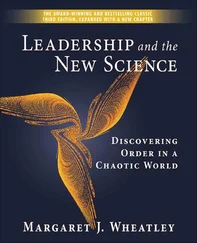The current management practices have evolved from earlier theories. Management practices were part of the governance in ancient Samaria and Egypt as far back as 3,000 b.c. (Daft & Marcic, 2015). Most of our current understanding of management, however, is based on theories of management that were introduced during the industrial age as factories developed and manufacturing flourished. Some of these theories are discussed in Table 1.4.
Table 1.4 Management Theories
| Management theory |
Key aspects |
| Scientific ManagementGulick & Urwick (1937), Mooney & Reiley (1939), Taylor (1947) |
Focuses on goals and productivity; organization is a machine to be run efficiently to increase production.Selects the right person to do the job; provides the proper tools, training, and equipment to work efficiently.Uses time and motion studies to make the work efficient. |
| Bureaucratic ManagementWeber (1864) |
Focuses on hierarchical superior‐subordinate communication transmitted from top to bottom via a clear chain of command.Uses rational, impersonal management; distributes activities among personnel.Uses merit and skill as basis for promotion and/or reward.Uses rules and regulations; focuses on exacting work processes and technical competence.Limits personal freedom.Emphasizes career service, salaried managers. |
| Human RelationsArgyris (1964), Barnard (1938), Likert (1967), McGregor (1960)Roethlisberger & Dickson (1939) |
Focuses on empowerment of the individual worker as the source of control, motivation, and productivity in meeting the organization's goals.Emphasizes that participatory decision making increases worker autonomy and provides training to improve work.Studies at the Hawthorne Western Electric plant in Cicero, Illinois, led to the belief that human relations between workers and managers and among workers are the main determinants of efficiency.The Hawthorne effect refers to the phenomena of how being observed or studied results in a change in behavior. |
Note . Compiled with information from Burns, L. R., Bradley, E. H., & Weiner, B. J. (2020). Shortell & Kaluzny’s health care management: Organization design and behavior . 6th ed. Chapter 4: Motivating People). Boston, MA: Cengage Learning.
While practicing managers, such as Fayol, who was mentioned earlier, were describing the functions of managers, a man named Frederick Taylor was focusing his attention on the operations within an organization by exploring production at the worker level. Taylor is acknowledged as the Father of Scientific Management for his use of the scientific method and as the author of Principles of Scientific Management (1911). Productivity was the area of focus in Scientific Management. Taylor, an engineer, introduced precise procedures based on systematic investigation of specific situations. The underlying point of view of Scientific Management is that the organization is a machine to be run efficiently to increase production. Scientific Management pioneered studies of time and motion that emphasized efficiency and culminated in “one best way” of carrying out work.
Max Weber is the German theorist recognized for the management theory of Bureaucracy. Weber's beliefs were in stark contrast to the typical European organization that was based on a family‐type structure in which employees were loyal to an individual, not to the organization. Weber, however, believed efficiency is achieved through impersonal relations within a formal structure, competence should be the basis for hiring and promoting an employee, and decisions should be made in an orderly and rational way based on rules and regulations. Organizations were bureaucracies based on a hierarchy with clear superior‐subordinate communication and relations, based on positional authority, in which orders from the top were transmitted down through the organization via a clear chain of command.
Human Relations Management
Management that focused on human relations began by examining employee responses to conditions through a series of studies called the Hawthorne experiments. In contrast to the science of exact procedures, rules and regulations, and formal authority that characterized Scientific Management, theories from the Human Relations Management school of thought espoused the individual worker as the source of control, motivation, and productivity in organizations. During the 1930s, labor unions became stronger and were instrumental in advocating for the human needs of employees. During this time, experiments were conducted at the Hawthorne plant of the Western Electric Company in Chicago that led to a greater understanding of the influence of human relations in organizations.
Electricity had become the preferred power source over gas; the Hawthorne plant experiments were run to show people that more light was necessary for greater productivity. This approach was designed to increase the use of electricity. Researchers Mayo (1933) and Roethlisberger and Dickson (1939) measured the effects on production of altering the intensity of lighting. They found that, with more and brighter light, production increased as expected. However, production also increased each time they reduced the light, even when the light was extremely dim. Their research findings led to the conclusion that something else besides the light was motivating these workers.
The notion of social facilitation, or the idea that people increase their work output in the presence of others, was a result of the Hawthorne experiments. The researchers also concluded that the effect of being watched and receiving special attention could alter a person's behavior. The phenomena of being observed or studied, resulting in changes in behavior, is now called the Hawthorne Effect. Also emerging from this study was the concept that people benefit and are more productive and satisfied when they participate in decisions about their work environments.
The human relations perspective in management theory grew from the conclusion that worker output was greater when the worker was treated humanely. This spawned a human relations point of view and a focus on the individual as a source of motivation. Motivation is not explicitly demonstrated by people but rather is interpreted from their behavior. Motivationis a source of influence for personal choices. Motivation is a process that occurs internally to influence and direct our behavior in order to satisfy needs (Lussier & Achua, 2015). Motivation theories are not management theories per se; however, they are frequently considered along with management theories.
There are many theories of motivation, e.g., Maslow's Hierarchy of Needs; Aldefer's Expectancy‐Relatedness‐Growth(ERG) Theory and Model of Growth Needs, Relatedness Needs, and Existence Needs; Herzberg's Two‐Factor Theory; and McClelland's Theory and Model of Achievement, Power, and Affiliation. Table 1.5discusses several of these Motivation Theories, including Maslow's Hierarchy of Needs, Herzberg's Two‐Factor Theory, McGregor's Theory X and Theory Y, Ouchi's Theory Z, and Vroom's Expectancy Theory.
Table 1.5 Selected Motivation Theories
| Motivation theories |
Key aspects |
Application to beginning nurse leader/manager |
| Hierarchy of needsMaslow |
Motivation occurs when needs are not met. Certain needs have to be satisfied first. The hierarchy of needs starts withPhysiological needs, thenSafety and security needs, thenSocial needs, followed bySelf‐esteem needs. ThenSelf‐actualization needs can be met.Needs at one level must be satisfied before one is motivated by needs at the next higher level. |
A new graduate nurse understands that needs change, but if needs are unmet, then an individual may not be able to attend to the next higher level need until the lower level needs are met. A co‐worker who does not feel safe from violence at work would not be able to fully engage in socializing until her safety and security needs were met. |
| Two‐Factor Theory:Hygiene Maintenance Factorsand Motivator FactorsHerzberg |
Hygiene Maintenance Factorscan prevent job dissatisfaction or be a source of job dissatisfaction if absent. These include adequate salary, job security, quality of supervision, safe and tolerable working conditions, and relationships with others. These factors by themselves do not lead to job satisfaction . Motivator Factorsdo contribute to job satisfaction and include meaningful work, opportunities for development and advancement, responsibility and recognition. |
New graduate nurses can consider salary, working conditions, and quality of supervision when applying and interviewing for a job, as these Hygiene Maintenance Factors are needed to avoid job dissatisfaction.Motivator Factors should also be evaluated when considering a job opportunity to ensure that there are adequate opportunities for responsibility, recognition, advancement, and support for achievement. |
| Theory X and YMcGregor |
The Theory Xview is that motivation results from leaders who direct and control their employees; the underlying notion is that people prefer security, direction, and minimal responsibility so that coercion and threats are necessary for people to do their work. In contrast, the Theory Yview is that people have self‐control and discipline and enjoy/are motivated by involvement in work and creative opportunities. Leaders must remove work obstacles to enable involvement so that people can carry out their work. |
Individuals working in a group or a team of diverse individuals might have different motivators. A nurse leader can adjust their leadership style to work both with Theory Ypeople who display self‐control and discipline as well as to work with other Theory Xpeople who prefer more direction, less responsibility, and more supervision. |
| Theory ZOuchi |
The Theory Zview is that collective decision making, long‐term employment, being mentored, and working in quality circles to manage service and quality is a humanistic style of motivating workers; studied in Japanese organizations. |
New graduate nurses can pursue opportunities to be involved in the organization if the aspects of Theory Z are desirable. A nurse can seek out a mentor and would want to have a leader who fosters employee involvement and quality circles. |
| Expectancy TheoryVroom |
The equation of Force = Valence (x) Expectancy can help to predict an individual's motivation as negative, neutral, or positive. Force equals the amount of effort that will be exerted to reach a goal. Valence is the level of attractiveness or unattractiveness of the goal. Expectancy is the perception that the goal will be achieved. |
One way to apply this theory when deciding what groups to become involved in is to identify if a group's motivation is negative, neutral, or positive that the goal will be achieved. |
Maslow's Hierarchy of Needs
Читать дальше












